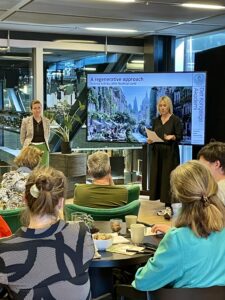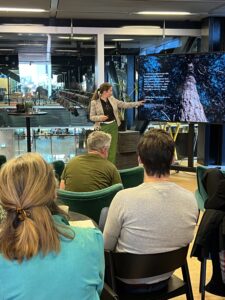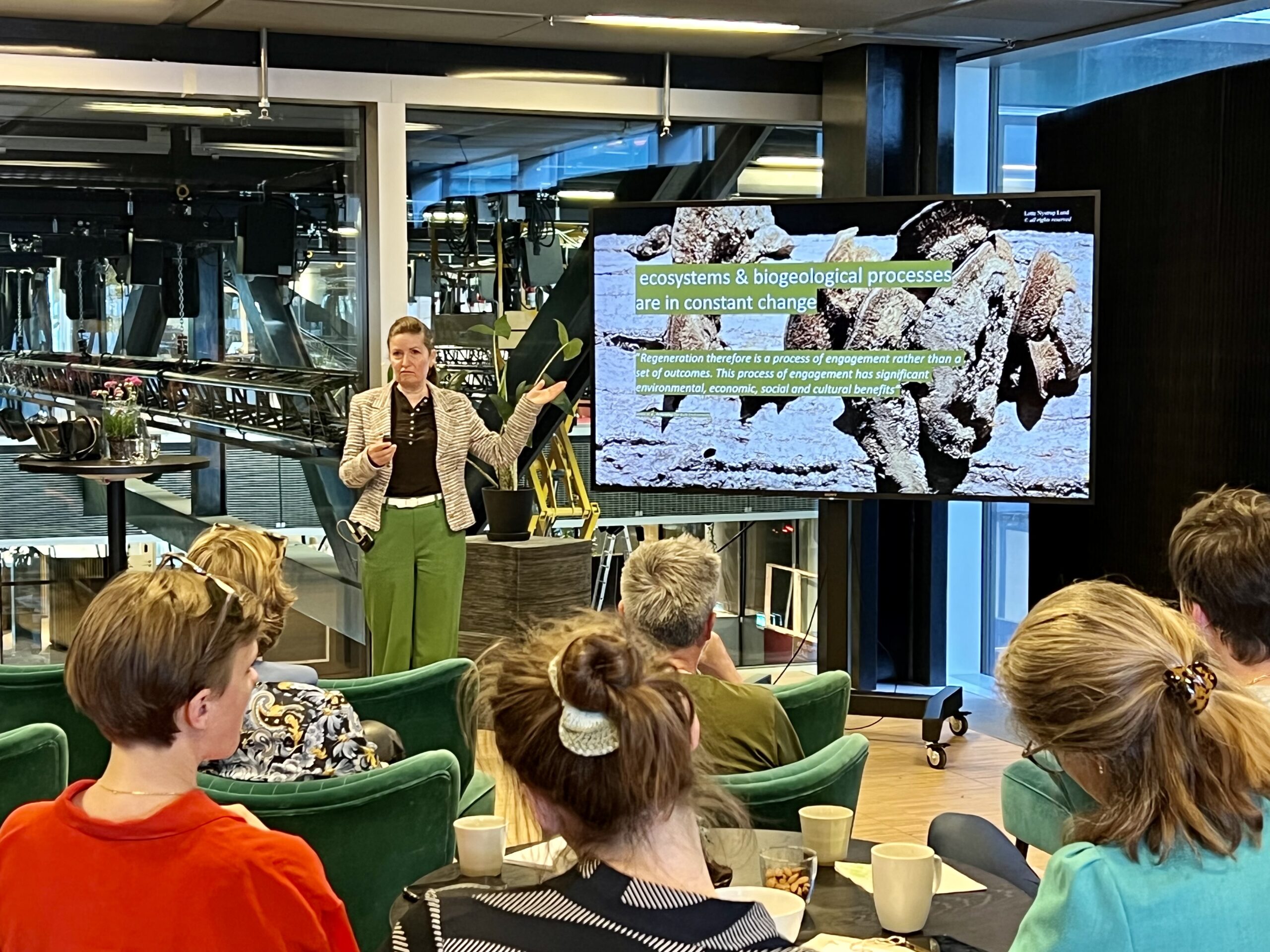Biodiversity is declining, we are relating less to nature, and we are consuming way more than the planet can account for. A solution to this could be a regenerative approach. What is it? And how does it look in an urban context?
At the Science Talk: Regenerative Urban Development, industrial researcher at The Royal Danish Academy and By & Havn, Lotte Nystrup Lund, elaborated on the regenerative approach and how it can be integrated into urban development.
For a regenerative approach, it is not enough to be neutral and do no harm. It is of course important not to cause further harm, but the status quo isn’t sustainable. Instead, we must add positively to living organisms and ecosystems.
To do this, we need to adjust how we see the world. Instead of seeing everything as limited spheres, we need to understand that everything is connected to the living systems of animals, plants, fungi, habitats, ecosystems, and biomes. This perspective also changes how we must look at human consumption, design, and urban development.
The Three Main Challenges

Science Director, Pernille Berg, welcomes guest at the hybrid Science Talk before Lotte Nystrup Lund starts her presentation.
A regenerative approach would help us counter ongoing problems and crises and restore some of the things that have been destroyed or decreased over the years. Lotte Nystrup Lund, who is also part of our Circular Built Environment Network, mentions three key challenges we face in the world today:
The first challenge is that our current model of development degrades the Earth’s finite capacity to sustain human wellbeing. We use the equivalent of several planets every year with our current consumption. This is far from sustainable.
The second challenge is what she calls “Nature Deficit Disorder”; we have become more detached from nature. 90% of our time is spent indoors, and it is urban life that is detaching us from relating to nature. It’s causing “the big disconnect” – we no longer understand nature in the same way we used to, an example is our ability to name flora and fauna. It’s much harder to protect something, that you don’t know exists.
The last challenge, Lotte Nystrup Lund mentions, is perhaps the most critical. Biodiversity is declining faster than ever before, and more than 1 million plant and animal species are threatened by extinction. According to the EU, loss of biodiversity is a problem for climate, industry & agriculture, security & safety, health, food security, equity, and future generations. All human capital originates from nature, and a loss of biodiversity is, therefore, a threat to our way of living, our societies, and civilization.
Creating Regenerative Cities
So how can we reverse this?
In Denmark, only 10% of the landmass is made up of cities and built environment, whereas 60% is agriculture. One might therefore be tempted to ask: What can urban areas do about this? Isn’t this more a question of making changes in the rural areas?

Lotte Nystrup Lund talks about the biodiversity crisis and how design can learn from nature.
As previously stated, the regenerative approach entails looking at things on a larger scale. This also means that there is no border between rural and urban. What we do and how we consume in the city affects the way farmers work and how the rural landscape is formed. Lotte Nystrup Lund says that we must change our food production and consumption, but it doesn’t make sense to just blame farmers and rural areas. They work and look the way they do because of urban lifestyles.
Besides, it is also false that we can’t integrate regenerative practices in the cities. There can be many habitats in urban areas for different species, and we need to make multispecies cities. We shouldn’t just design for people but ensure space for animals and plants who can thrive in urban habitats.
One way to make cities for more than just people is by using biophilic design, where nature is mimicked in design solutions. Ecosystems remain the best-known example of sustainable organization, so it’s important to understand and mimic this in the creation of regenerative habitats.
The change is not going to happen overnight. It can take a long time for plants and animals to repopulate the cities, but this should only be an incentive to begin the process as soon as possible. By designing for biodiversity, we also do ourselves a favor: several studies show that people are happier when they relate to nature – another good reason for having more nature in the cities.
Watch the entire talk on our YouTube, where Lotte Nystrup Lund also talks about how art can inspire new ways of thinking, what the city of Amsterdam has done about biodiversity, and how Danes are less aware of biodiversity than their European peers.
All Science Talks of 2022 have the theme “Regenerate”, which you can read more about in this interview with one of the industrial researchers from our Circular Built Environment Network. Stay updated on upcoming talks in our event calendar.







